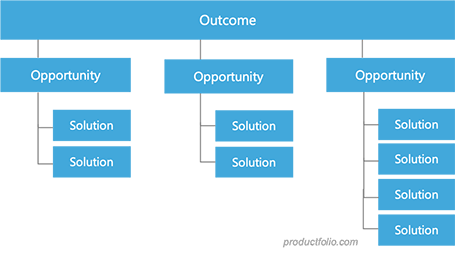Opportunity Space
Product teams are familiar with the terms, problem space and solution space. One relates to the needs of customers while the other is finding a solution to the identified problems. But there is also a third called the opportunity space. This, according to Vlerick Leuven Gent Management School, is the “broad space of ideas and opportunities where you and your team want to create value.” It offers room for innovation, value additions, and growth.
The extent of the opportunity space is determined by the unmet needs of customers and trends. It is also influenced by the nature of an organization, including its technical know-how, capabilities, and goals.
Looking into the Opportunity Space
It may be argued that every business first explores the opportunity space before doing anything. The difference is often that they don’t call it by such a name or don’t do enough to studying it.
A careful, methodical approach to the opportunity space helps you to discover many things. It lets you know what you are and what you are capable of doing. It enables you to better recognize what you can and should do and what you’re better off without even if you are capable of doing it.
Exploring the opportunity space allows you to know more about the world, more especially the unmet needs. It enables you to know what ideas are worth pursuing, considering their connections to customer needs and your goals.
The Need for Structure
Opportunity space relates to the gap between what exists in the real world and the desirable. In light of the foregoing, it is hard to have a “complete” or “finished” product, especially digital-wise. There will be fresh opportunities to work on regardless of how many you and your team have already worked on.
However, you might find that you are having less impact despite the number of opportunities you address. This is why it is crucial to have a structure. Which should you work on first, postpone, or even ignore entirely?
The truth is that product teams do not have to work on every customer opportunity. Your aim should be to address those that promote the achievement of your desired outcomes. This is what helps you to ensure that you are creating value not only for customers but also for your organization. It also better ensures the long-term success of your product.
It is for this reason that it is critical to apply structure to the opportunity space. It keeps you from jumping aimlessly from one opportunity to another. To begin, you want to take an inventory of customer opportunities. Assess them one against the other in terms of the impact they can have. Your aim should be to identify those that have the most impact on your desired outcomes to address them first.
Mapping with the Opportunity Solution Tree
When it comes to managing opportunities, some product teams depend on an opportunity backlog. This is a prioritized list of opportunities that could be looked at during product discovery.This backlog offers a better approach for addressing customer opportunities, compared to working on each one as they come. However, it is not the best because you may find them rather too complex or ambiguous to work with.

The opportunity solution tree offers a better, more intuitive way of mapping the opportunity space. This visual aid displays clearly what you are learning during product discovery as well as the decisions being made. It presents a somewhat simplified view of how you aim to achieve an outcome.
This framework portrays two important relationships. Product Talk calls them:
- “Parent-child” relationships
- “Sibling” relationships
The parent-child relationship is that between a primary opportunity and its subsets. On the other hand, the sibling relationship exists between distinct but related subsets of the same parent.
These relationships better help to make sense of the opportunity space. They show how an opportunity can impact another and how addressing one can help to tackle another (even if only partly so).
Mapping with an opportunity solution tree makes opportunities that appear rather daunting easier to tackle. Another benefit is that it encourages iteration, which is key to value delivery in Agile settings.
The tree structure can be immensely helpful, among other scenarios, if:
- You’re struggling to prioritize your many ideas during product discovery.
- You have the desired outcome but are confused about how to achieve it.
You begin the process of building your opportunity solution tree by first identifying the desired outcome. This is what guides you on what opportunities are worth addressing.
It goes without saying that every opportunity you will be exploring in the opportunity space must be from research. You don’t just start coming up with solutions that can help attain your outcome without having this covered.


